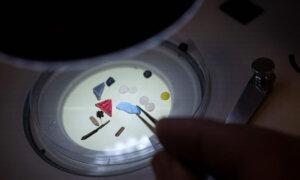Microplastics have been identified in human and canine testicles, lengthening the list of where the insidious particles have been found.
Human Samples Had Triple the Microplastics
A team of researchers at the University of New Mexico (UNM) examined testicular tissue samples from humans and dogs and found microscopic pieces of plastic in every sample. The human samples were supplied by the New Mexico Office of the Medical Investigator, which collects tissues during autopsies, and the canine samples came from the City of Albuquerque animal shelters and private veterinary clinics that spay and neuter animals.The researchers didn’t expect to find microplastics in the reproductive system—at least not to the degree they did.
“When I first received the results for dogs I was surprised,” Dr. Xiaozhong Yu, a professor at the UNM College of Nursing and lead researcher, said in a press release. “I was even more surprised when I received the results for humans.”
The research team found nearly three times the amount of microplastics in the human samples compared with the canine samples. There were 122.63 micrograms of microplastics per gram of tissue in the canine samples and 329.44 micrograms per gram in the human.
The team found 12 types of microplastics in 47 canine samples and 23 human samples. The most prevalent polymer in both types of tissue was polyethylene, which is used to make plastic bags and bottles. The next most common polymer in dogs was PVC, which is used in plumbing.
Dr. Yu and his team said that the level of microplastics could correlate with reproductive issues. The team determined the sperm count in the canine samples and found that the higher the level of PVC in the tissue, the lower the sperm count was. However, that correlation was not found with the concentration of polyethylene in tissue.
Why Dogs?
The study compared dogs and humans because the two often share environments, and they share some biological characteristics.“Compared to rats and other animals, dogs are closer to humans,” Dr. Yu said.
He noted that dogs and humans produce sperm in very similar ways and that the sperm concentration is also comparable between the two species.
One of the environmental factors they share is microplastics, which are found worldwide, even at the top of Mt. Everest.
“The impact on the younger generation might be more concerning,” Dr. Yu said, referring to men 35 years old and younger. “We have a lot of unknowns.”
He said the long-term effects of microplastics need to be examined.
Dr. Yu added that although he doesn’t want to scare anyone, he thinks it is important to make people aware that their choices have consequences.
“We want to scientifically provide the data and make people aware there are a lot of microplastics,” he said. “We can make our own choices to better avoid exposures, change our lifestyle, and change our behavior.”







